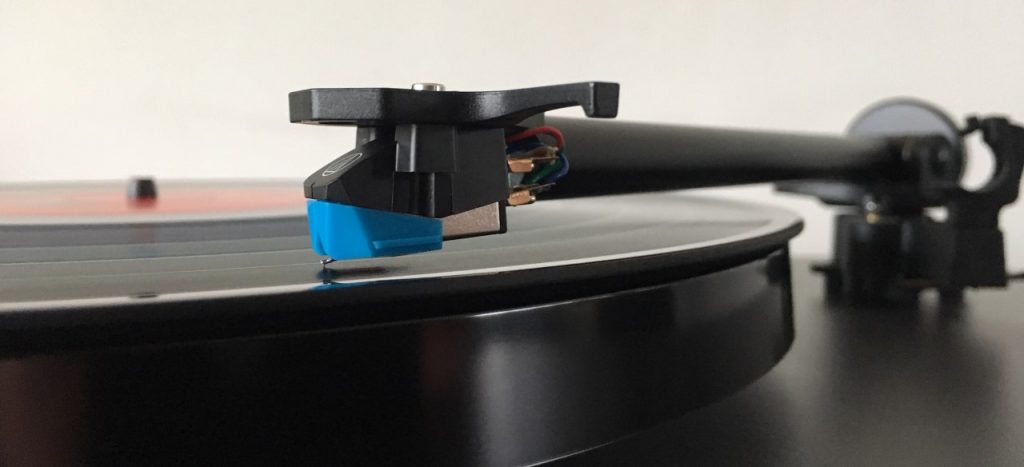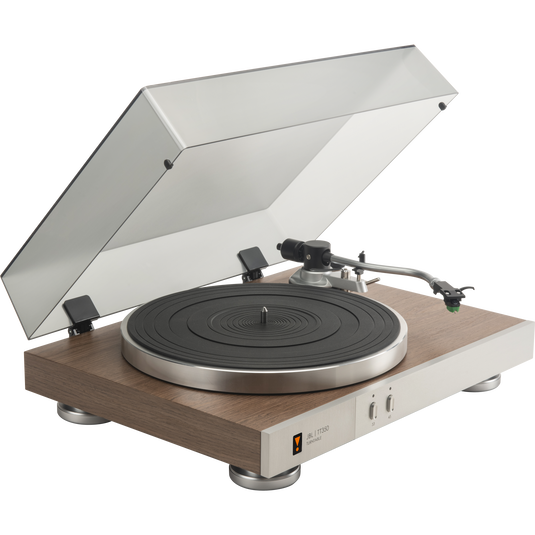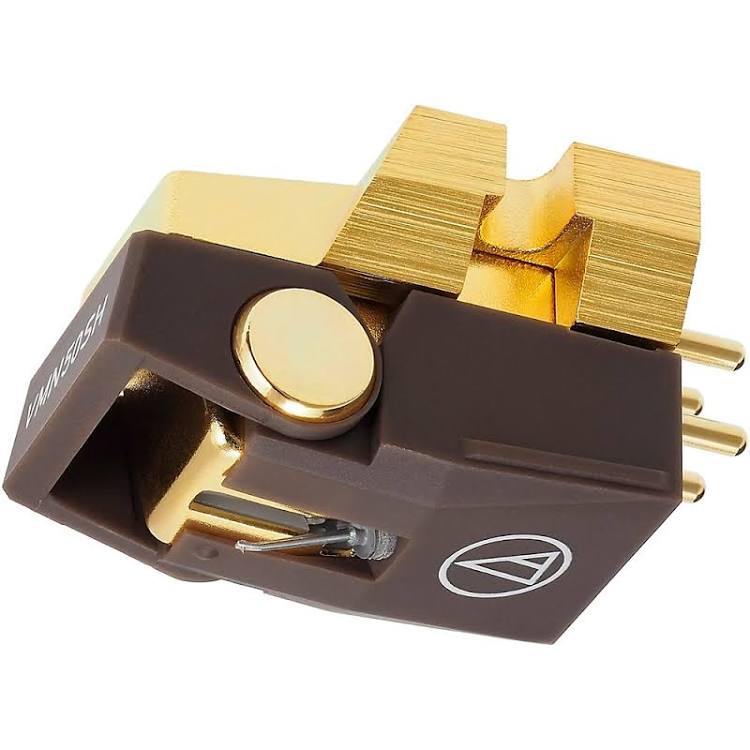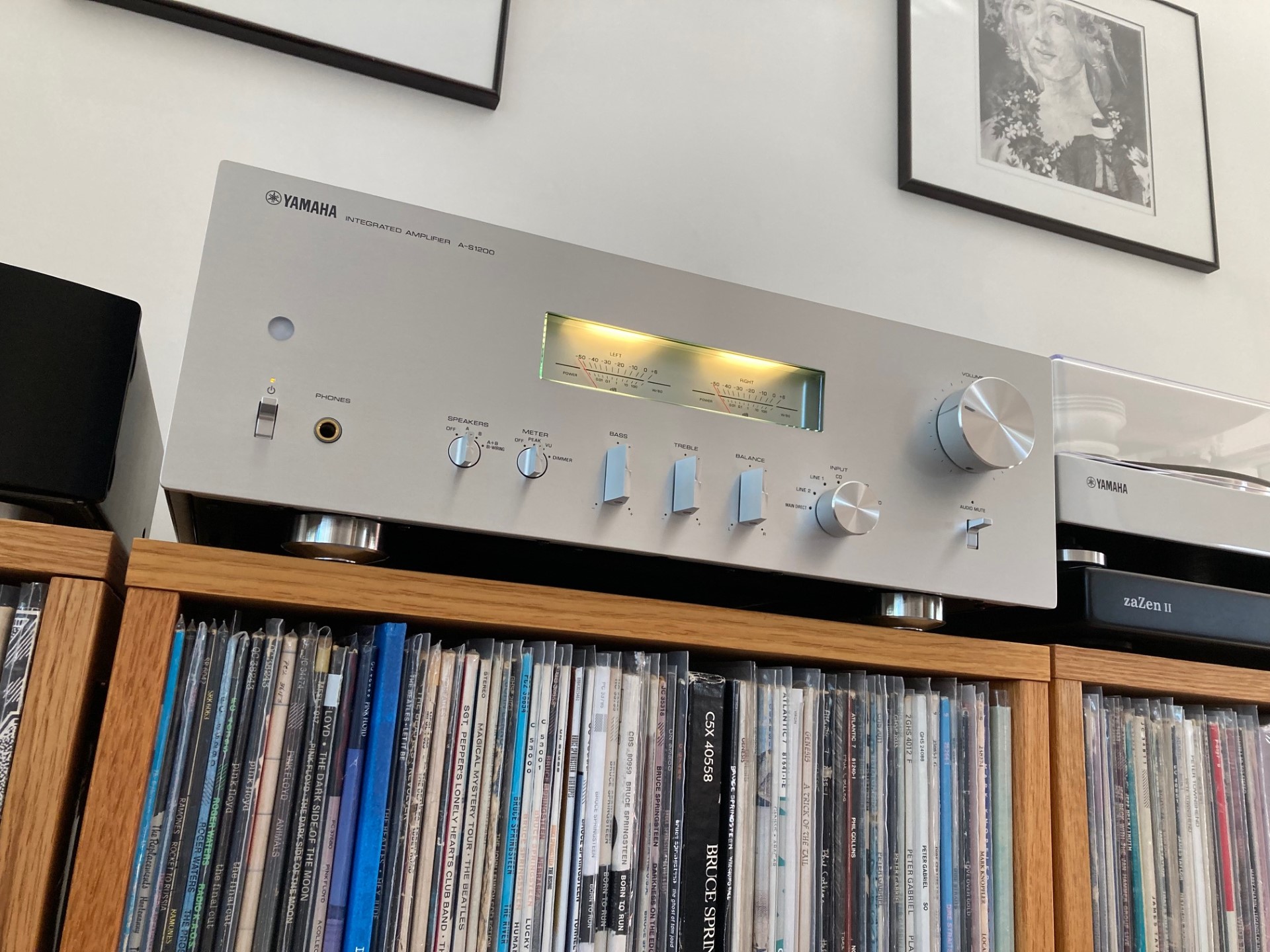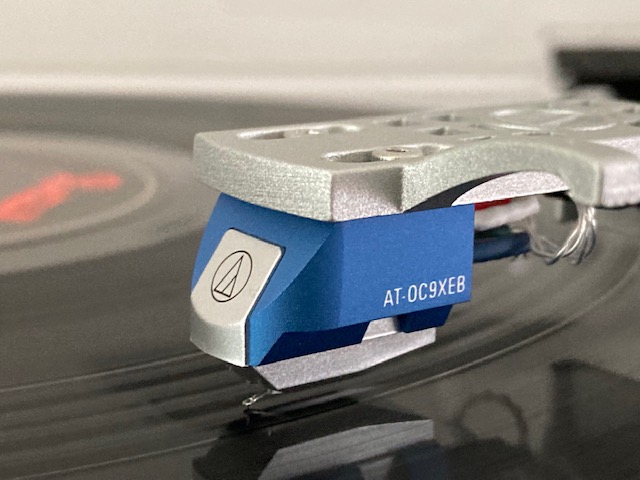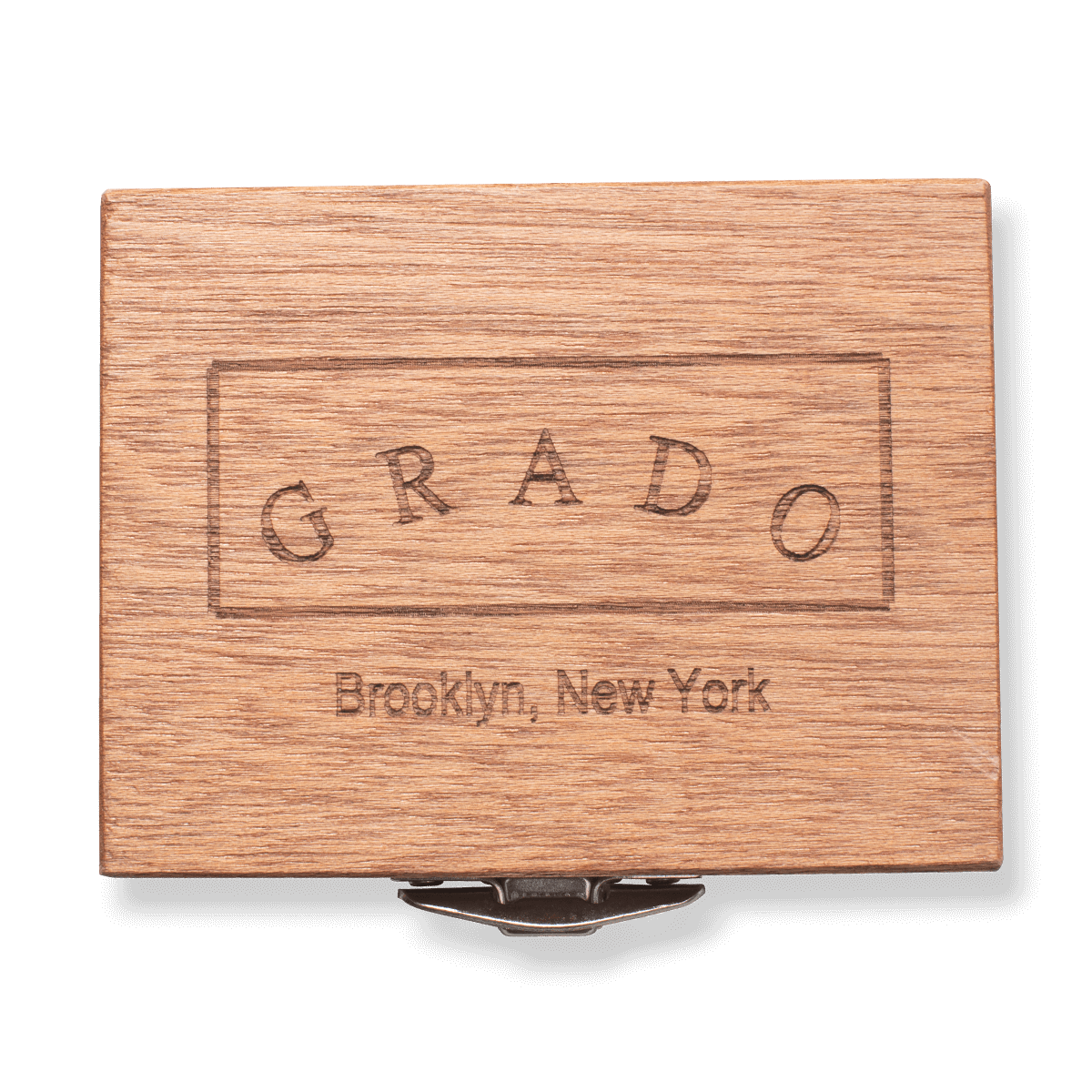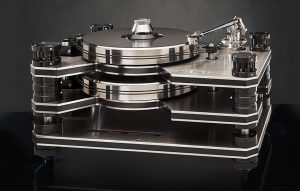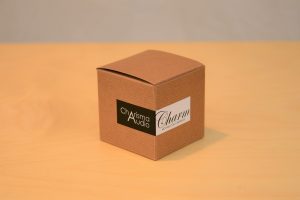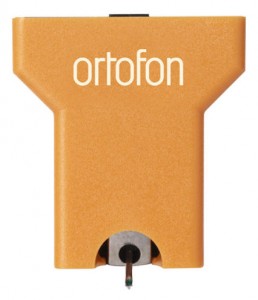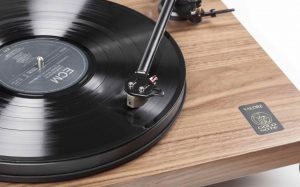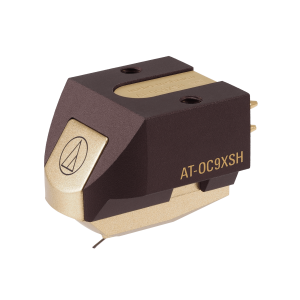The AT-VM95C is a cheap cartridge. Not merely affordable, not budget-friendly, but downright cheap. It's $34. I took two people to Starbucks the other day and did more damage. A replacement stylus is $21. What else can you call something priced less than fast food? And, more importantly, should you take it seriously?
Of course you should. Not only because it does its job well, but also because in today's shitty world, $34 is a lot of money to more people than ever, many of whom love music. Here's a product that, hopefully, might allow more folks to come home at the end of the day and listen to records. Or maybe spend less on phono cartridges and donate extra to charity, in which case, bless their hearts.
This is the absolute entry-level model in Audio-Technica's new VM range. It replaces the long-running AT95 series that also appeared as the freebie cartridge on countless arms and tables for decades. Those were good indeed. Linn slightly modified one back in the day, dubbed it the Basik and sent it off to be embraced by thousands of LP12 owners.
The AT-VM95C is certainly basic (basik?) on paper. It has a 0.6ml conical stylus bonded to an aluminum cantilever. Moving up an extra $16 gets you the VM95E, which you should absolutely do since an elliptical stylus will yank way more than sixteen bucks worth of music out of the groove. The price jumps more significantly as you move up to the EN, ML and SH versions with nude elliptical, line contact and Shibata styli, respectively. The bodies and styli are all interchangeable, so you can start with any one and move up or down the range with a simple swap. There's even an SP version for 78rpm records.
In terms of versatility, one cartridge body and three styli could handle everything from those old 78s to beat up garage sale finds to the most pristine pressings in your collection. Combining the subject of this review with the Shibata and 78 styli costs about $272 total. It's not fiddly at all to swap them out either, they simply pull smoothly on and off the cartridge body.
It's also worth pointing out that this is a relatively handsome product at a price point where most cartridges look pretty janky. That may not matter to you, but it will to manufacturers who'll be supplying them as freebies on complete turntable packages because, aside from sounding very nice, it's a good visual complement. You'll be seeing more of these in the future.
Certainly this isn't the only good, inexpensive cartridge out there, and the competition gets a lot fiercer as you pass the $100 and $200 marks. (Audio-Technica even competes with itself a little; the higher-priced 95 series models overlap with the lower-priced VM.) What makes the VM95C interesting is it benefits from the trickle down of the pricier siblings. One example is the threaded screw inserts in the body, which are unheard of at this price. They eliminate the need for nuts, and make the process of mounting so much easier and less nerve wracking, especially for novices. This is the perfect "practice" cartridge for anyone's first attempt at turntable setup, even if you have zero intention of using it long term.
Thanks in part to those threads, it took me less than 10 minutes to mount and align on AT's LP-1240USB table. Because the cantilever is so visible, it was easy to line up with the hash marks on my protractor. VTA isn't super crucial due to the conical stylus, but again, that was easy to rough in visually as well. Tracking was fine at the recommended 2g. And because the thing is only $34, I did the whole operation without even removing the stylus. Daredevil!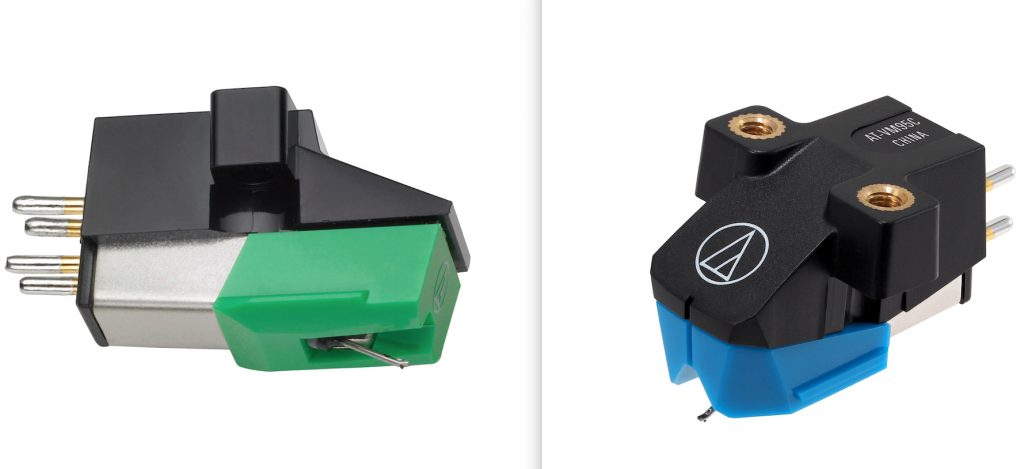
Old (left) versus new
The sound is big and bold, for better more often than worse. Rock music rocks, and classical stuff is plenty engaging. Images tend to lack perfectly correct scale; a delicately plucked banjo, for example, can have similar presence as a big brass instrument. It's not that this cartridge gets it wrong per se, just that there's a limit to its resolution. Treble is splashy and lacks delicacy, but neither is it glaring or sibilant. Overall, there isn't as much air as you get with higher-priced models. Soundstaging is fine if unexceptional, though the slightly exciting character makes up for it by giving things a vivid sparkle. Parts, or all, of the presentation can sometimes sound plainly like music being reproduced, like biting into a veggie burger versus the real thing—the bun and toppings are familiar, but the patty leaves something to be desired.
I thought about precisely none of that while listening to music the way most people do. While cooking dinner or folding laundry, never did any of these limitations stick out. While I'd probably say the same about other budget cartridges, I can't say the same about background music I've heard in some cars, waiting rooms, and restaurants. There are plenty of products out there that don't sound good and this isn't one of them.
I'm listening right now to Bach/Handel harp concertos (Deutsche Grammophon 2531 114) and the delicacy of the transients and reproduction of dynamic swings isn't merely good for the money. Switching to Peter Ostroushko‘s Buddies Of Swing (Red House Records RHR17), the attack of the piano and mandolin is sharp but impressively speedy, with plenty of immediacy and a natural enough timbre that's on the bright side. Multiple vocalists don't get completely mushed together, and the VM95C manages to keep up. As the cartridge broke in, it relaxed noticeably with every passing hour and ended up sounding borderline sophisticated.
I briefly listened using the Avid Pulsus phono stage, and its strengths were still in evidence—but the shortcomings were more obvious too. Played through the phono stage of a 2010-model Teac Reference CR-H500NT CD receiver, the slightly laid-back character of the Teac balanced well with the cartridge's exuberance and smoothed the rougher edges.
I ended up buying two of these, mounting the second on a Rega RP1. The synergy was good, with the midrange-rich Rega offsetting the AT's more energetic and forward nature. Once again, it became more natural and relaxed with break-in time. Thanks in part to the Rega's cannily rolled-off highs, the AT's treble performance sounded much smoother here. (Bear in mind that the Rega arm does not allow for height adjustment, or any adjustment really besides tracking force and antiskate. Proper VTA will require either the addition of shims to raise the arm, or maybe a thinner record mat. You can get by without them using the conical and elliptical versions, but definitely not with the finer profiles.)
Conclusion
In a hobby where it's easy to drop six figures, bargain hunting is a fun, hopeful diversion. Audio-Technica's AT-VM95C is certainly a bargain. At only $34, it makes full, lively, engaging, dynamic, enjoyable, toe-tapping music. It's also super easy to set up and doesn't need meticulous tweaking to sound good. What it doesn't do well are mostly limitations rather than faults. If the basics here are this solid, I can only guess what upgrading the stylus would do.
So I have a new suggestion for people purchasing their first turntables. Take your total budget and subtract the price of an AT-VM95C cartridge. It's good enough that you can spend 90%, 95%, or heck, maybe nearly all of your budget on the best table, arm and phono stage you can afford, and then take time to save up for a cartridge upgrade—or maybe just $179 for AT's Shibata upgrade.
AT-VM95C Phono Cartridge
Retail: $34
Audio-Technica




